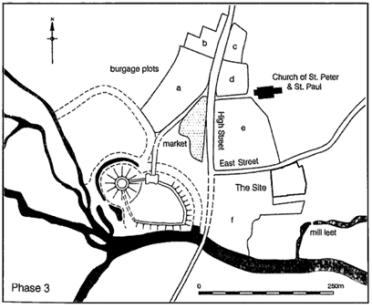History of the Mill Stream
Today, the Mill Stream is within a conservation area and is a shallow, slow-running back water. But this was not always the case and its historical importance can be traced to Medieval times when the Mill Stream or Leat (1), was the most significant of several streams that ran from the West to East through the town. For many years, it was the lifeblood of the town with brewers, tanners, blacksmiths all using its water and the Mill being an original component of a functioning town.

It is probable that prior to the building of the Norman Castle, several streams flowed West to East, across the area upon which the castle stands and onto the Mill.
The course of the streams was diverted to form a defence to the South of the castle and diverted again towards the Mill. To direct and maintain effective flow on the Mill Stream, there would have been banking and sluices, to divert water to where it was required.
What we recognise today as the main River Medway as it runs below the Castle, was for many years called the Mill Stream, implying the importance of the Mill.

Further development of the Medieval town included the creation of the town defences, consisting of a ditch and raised earth bank. The bank was up to 10 metres wide and up to 4.5 metres high. On the outside of which this there was a ditch about 6 metres wide and 2.5 metres deep. The route of the Fosse, as it was known is well documented and followed the course of the Mill Stream to the East at the point at which it diverted from the main river.
(1) an artificial channel that allowed the flow of water that drove the mill.